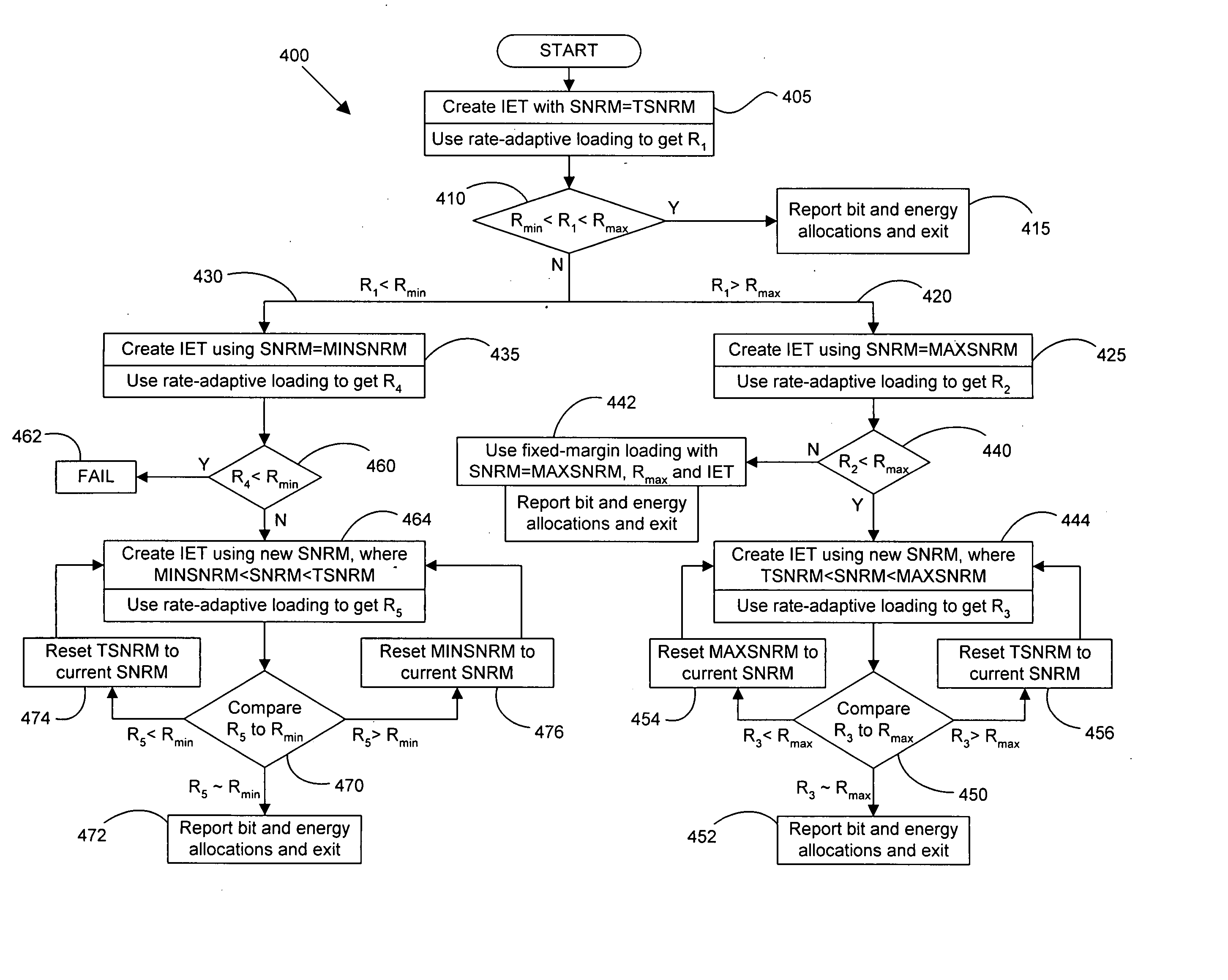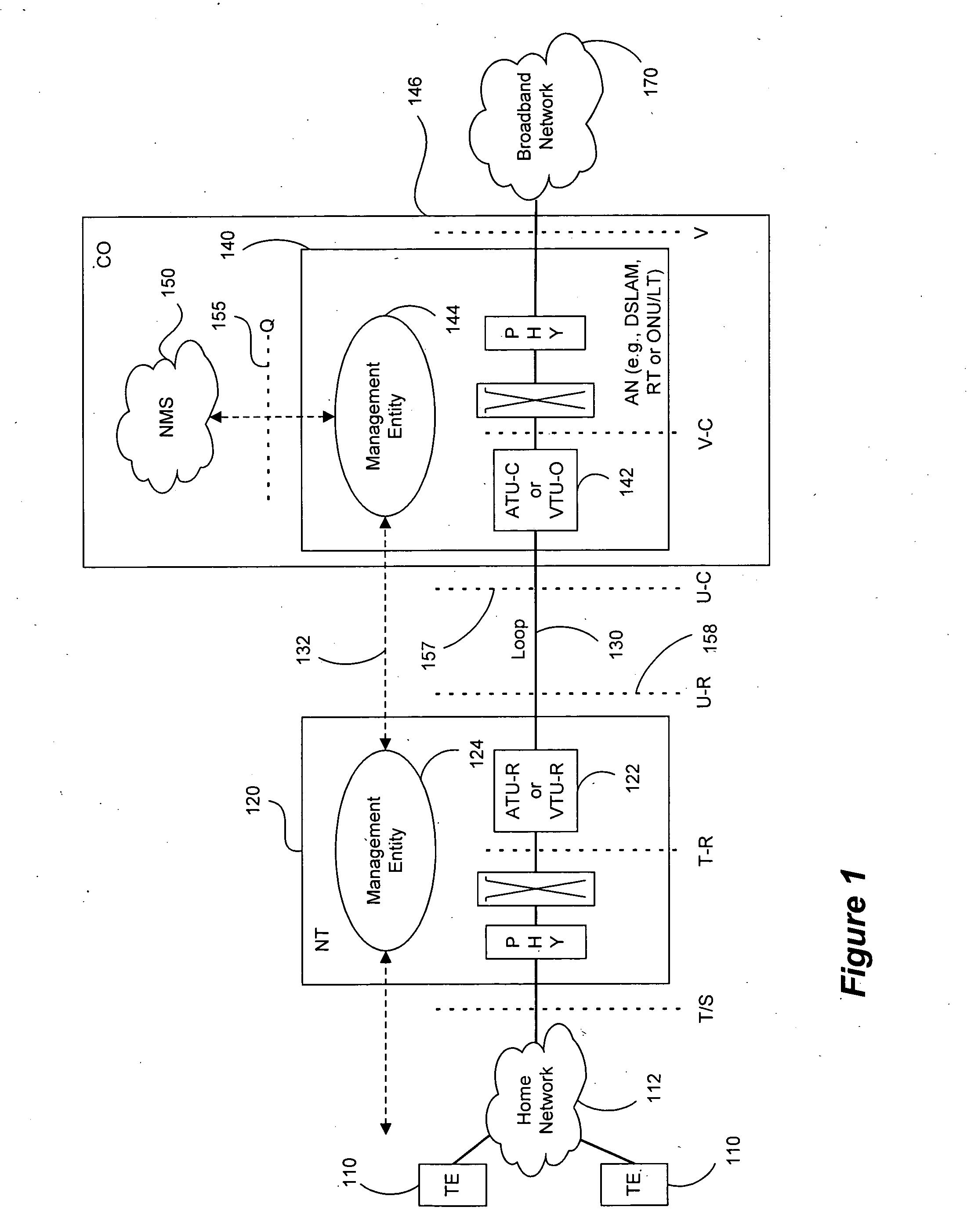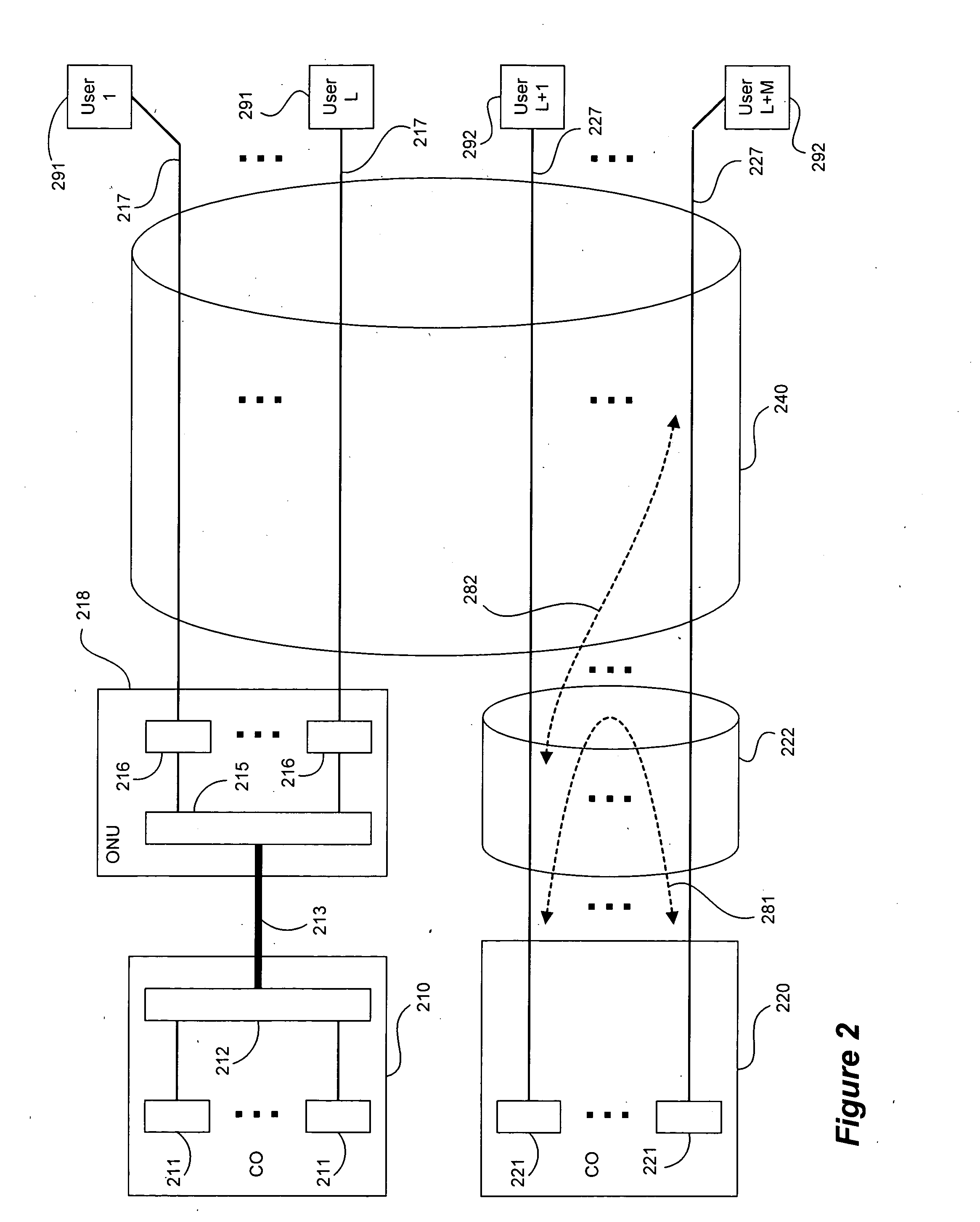DSL system loading and ordering
a technology of dsl and ordering, applied in the direction of multi-frequency code systems, transmission path division, duplex signal operation, etc., can solve the problems of deficiency of existing methods for power spectral density determination and bit allocation, and achieve the effect of favorable rate vector
- Summary
- Abstract
- Description
- Claims
- Application Information
AI Technical Summary
Benefits of technology
Problems solved by technology
Method used
Image
Examples
example 1
[0060] A simple DMT system uses two tones, where MAXSNRM=30 dB, TSNRM=6 dB, MINSNRM=0 dB, and Rmax=Rmin are such that only 1 bit needs to be loaded per DMT symbol. PSDMASK, channel condition and noise condition are shown in Table 3:
TABLE 3A simple DMT system with two tonesTone 1Tone 2PSDMASK−40 dBm / Hz−80 dBm / HzChannel insertion loss0 dB0 dBNoise power−100 dBm / Hz−101 dBm / HzSNR with maximum60 dB21 dBpower transmissionIncremental energy forK ×K × 100.98+(6−3−101) / 10,1 bit allocation for100.98+(6−3−100) / 10,(coding gain of 3 dB isTSNRM = 6(coding gain of 3 dB isassumed, K is a constant)assumed, K is aconstant)
[0061] Because noise is smaller for tone 2, the incremental energy for a one bit allocation is smaller for tone 2. Therefore, previous loading methods would allocate the single bit to tone 2. Assuming that 21 dB SNR corresponds to 7 dB of SNR margin for 1 bit loading, previous loading methods would have ended up with 7 dB SNR margin which is less than MAXSNRM=30 dB. As is apparent...
example 2
[0067] As will be appreciated by those skilled in the art, energy and bit allocations need to be considered over all tones together so that performance is not dominantly impaired by one or a few tones only. Example 2 is an example of a profile-limited single DSL line loading using margin-adaptive iterations. FIG. 4 also illustrates one or more embodiments related to Example 2 (which will reference numerals in FIG. 4): [0068] A. Loading with TSNRM at 405—Create an incremental energy table with SNRM=TSNRM. Use any suitable rate-adaptive loading technique with the incremental energy table. Define the resulting rate as R1. If at 410 R1 is between Rmin and Rmax, then report the bit and energy allocations and exit at 415. [0069] (1) If R1 is larger than Rmax, go to step B via branch 420. [0070] (2) If R1 is smaller than Rmin, go to step C via branch 430. [0071] B. R1>Rmax—At 425 create an incremental energy table with SNRM=MAXSNRM and use any suitable rate-adaptive loading technique with ...
example 3
[0083] Another technique according to embodiments of the present invention uses bit swapping during loading, one example of which is illustrated by Example 3. FIG. 5 also illustrates one or more method embodiments 500 related to Example 3. In existing DSL systems, bit swapping is used only during SHOWTIME, typically to maximize the minimum margin over all tones. In some embodiments of the present invention, bit-swapping is used during the final part of the loading process, before entering SHOWTIME, to maximize (or at least improve) margin in case bit loading was not optimal.
[0084] Any suitable loading sub-method 510 is used first to find an initial bit and energy loading. Before entering SHOWTIME at 530, a bit-swapping sub-method 520 (for example, the Levin-Campello methodology, well-known to those skilled in the art) is applied to maximize (or at least improve) the minimum margin over all tones. For example, using the simple loading method of Example 1, above, as sub-method 520, 1...
PUM
 Login to View More
Login to View More Abstract
Description
Claims
Application Information
 Login to View More
Login to View More - R&D
- Intellectual Property
- Life Sciences
- Materials
- Tech Scout
- Unparalleled Data Quality
- Higher Quality Content
- 60% Fewer Hallucinations
Browse by: Latest US Patents, China's latest patents, Technical Efficacy Thesaurus, Application Domain, Technology Topic, Popular Technical Reports.
© 2025 PatSnap. All rights reserved.Legal|Privacy policy|Modern Slavery Act Transparency Statement|Sitemap|About US| Contact US: help@patsnap.com



